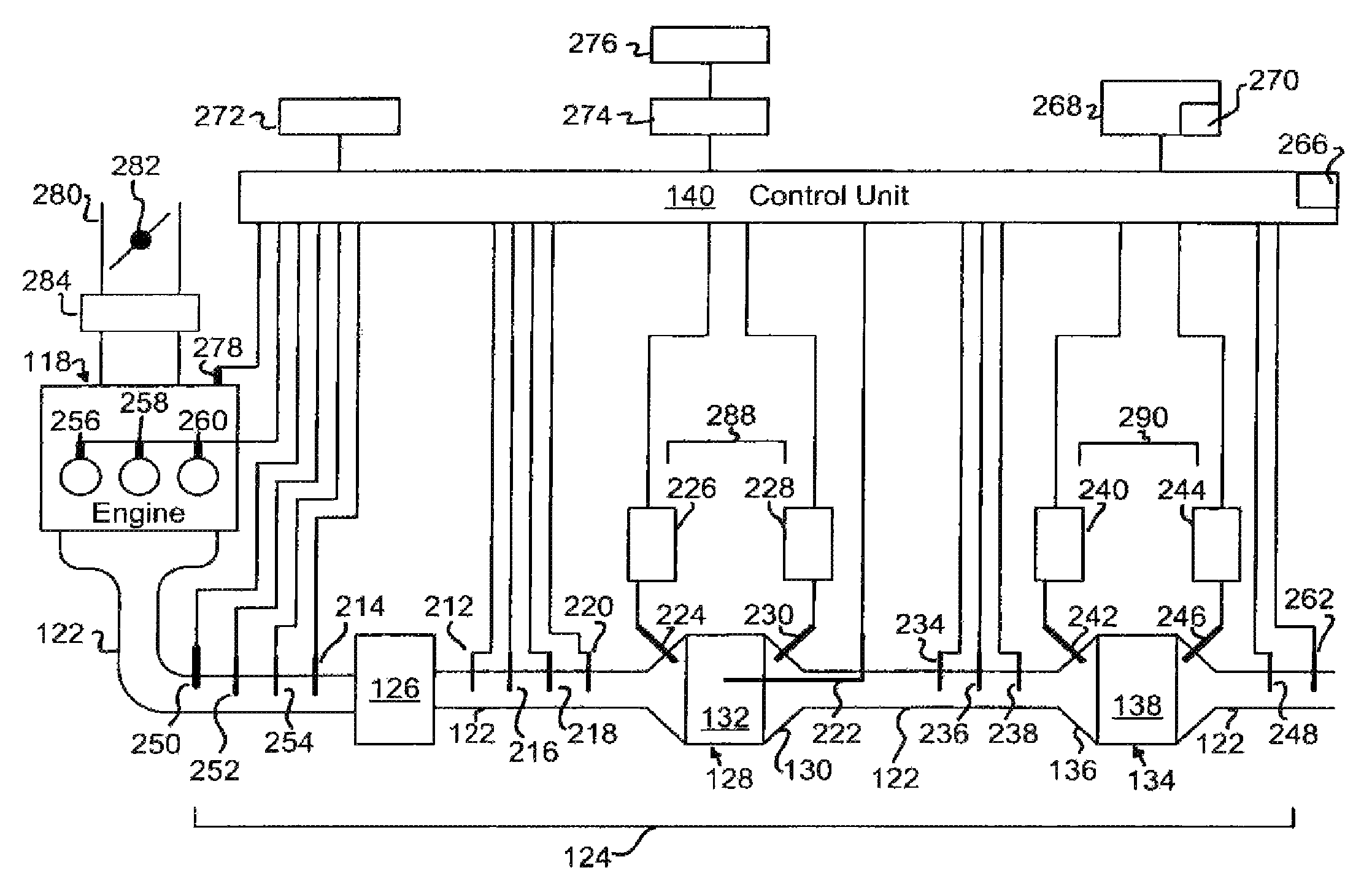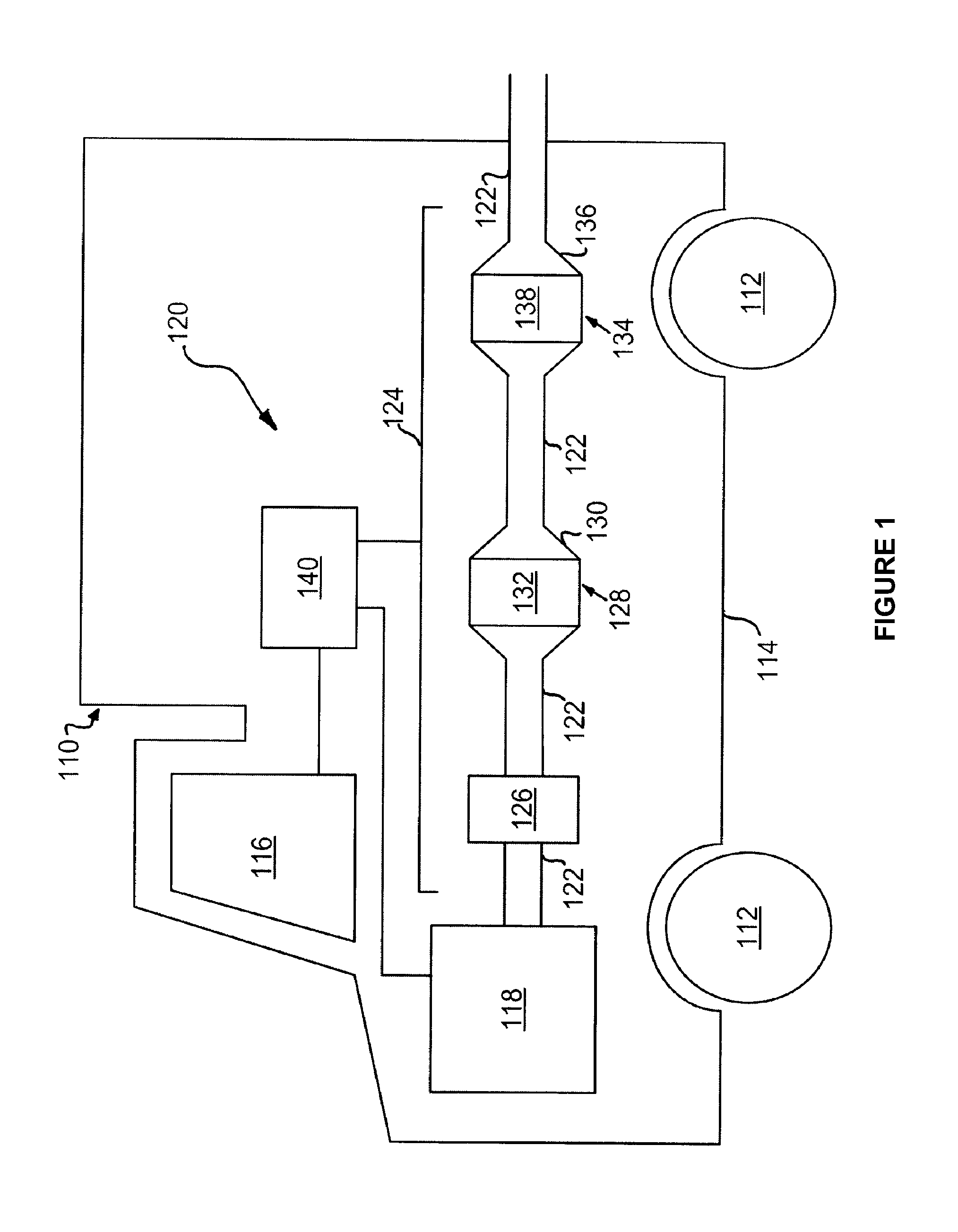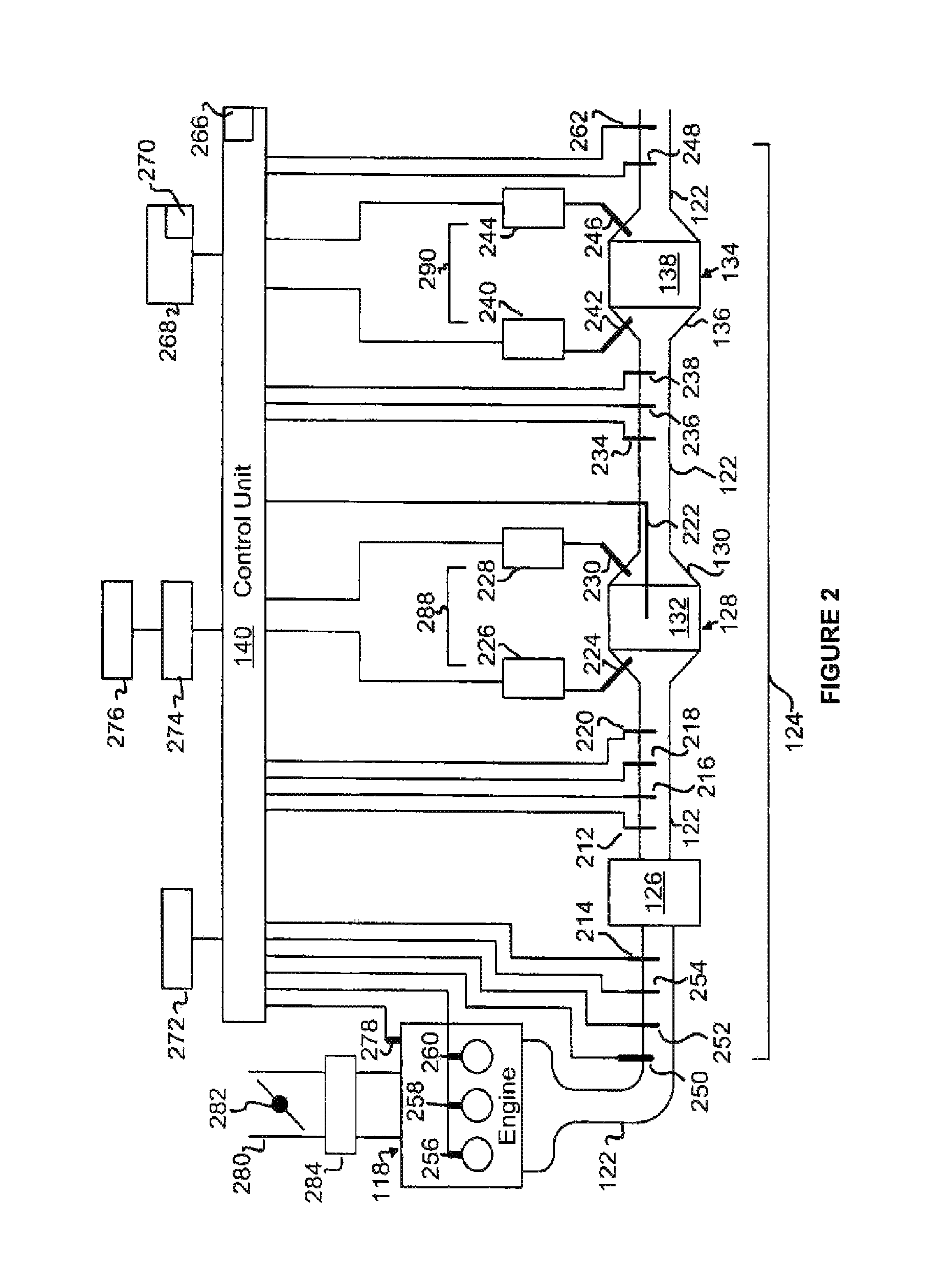As particulate matter accumulates in the filter, exhaust flow is restricted and backpressure increases.
This increased backpressure reduces engine fuel economy, and in severe cases, may cause engine malfunction or damage.
Excessive
soot accumulation in the particulate filter may lead to high internal filter temperatures during regeneration, increasing filter thermal stress, and, in some cases, resulting in filter
cracking or melting.
On the other hand, regenerating the filter too frequently results in unnecessary fuel economy penalties.
Ash accumulation displaces
soot, reducing the filter's soot storage capacity.
Ash deposits may alter the distribution of the soot accumulated in the filter.
Following extended use, the amount of ash accumulated in the particulate filter may significantly exceed the amount of soot and affect the filter's performance.
Filter failures may occur via the formation of cracks or melting, for example.
Pressure drop measurements alone provide only an indirect and imprecise measure of material accumulation in the particulate filter, and suffer from a number of disadvantages.
Further, the distribution of the accumulated ash and soot also affects the pressure drop measurement, and this distribution may change with time, particularly as the filter becomes loaded with ash.
Pressure drop measurements are also unable to distinguish between soot and ash accumulation in the filter, the latter of which introduces additional error in soot load estimates based on pressure drop.
Additionally, many types of filters exhibit a non-linear pressure drop response and pressure drop
hysteresis depending upon the loading state and history of the filter.
Further, the inability of these systems to directly monitor ash levels in the filter requires the filters to be periodically inspected, resulting
in vehicle or
machine down-time, regardless of the actual filter ash level.
Additionally, pressure-drop based measurements are unable to detect all but the most catastrophic of filter failures, and, in most cases, can not meet stringent on-board diagnostic requirements.
Furthermore, when used with cleaner burning fuels, (compared to the fuel with which the models were initially calibrated) the models tend to over-predict filter soot loading, resulting in unnecessary filter regenerations and fuel economy penalties.
The
combined use of predictive models and filter pressure drop measurements does little to overcome the deficiencies listed above.
These shortcomings lead to inefficient system operation, fuel economy penalties, increased filter thermal
cycling and fatigue, and reduced filter service life.
These measurement systems suffer from the deficiency that the amount of soot accumulated on the particulate filter is not necessary equivalent to the amount of soot entering the filter, as some level of passive regeneration may take place, depending on exhaust conditions.
Further,
exhaust gas soot sensors provide no information on ash accumulation or soot and ash distribution in the DPF.
In addition, many of these sensors suffer form soot
fouling, consume excessive amounts of energy, and are subject to error introduced by exhaust temperature,
exhaust gas velocity, and other factors.
However, such systems cannot determine the
spatial distribution of soot content within the particulate filter.
(a) Prior art systems are unable to monitor the
spatial distribution of material accumulated in the filter. Ash accumulation in the filter displaces soot and alters its distribution. Further, non-uniform flow conditions may also result in non-uniform material accumulation.
(b) All known filter load monitoring systems initiate filter regeneration based on some average total filter soot load. Locally high soot loads cannot be detected by systems that are not capable of measuring
material distribution in the filter.
(c) Previous
microwave- and RF-based filter loading systems cannot simultaneously detect both soot and ash accumulation in the filter over all exhaust conditions.
(d) These systems do not detect filter failures or malfunctions, which is important to ensure the filter is operating as required.
(e) These systems do not detect malfunctions or failures of individual components, such as sensors, for example, that may be required for correct operation of the filter.
(f)
Microwave and RF-based measurement systems are strongly affected by
moisture content and
water vapor present in the
exhaust gas and on the filter, which must be accounted for to reduce error in the measurement.
(g) Previous filter load monitoring systems fail to communicate with existing engine and exhaust sensors to provide
feedback control capabilities useful to modify engine operation to optimize the combined engine and after-
treatment system performance.
 Login to View More
Login to View More 


